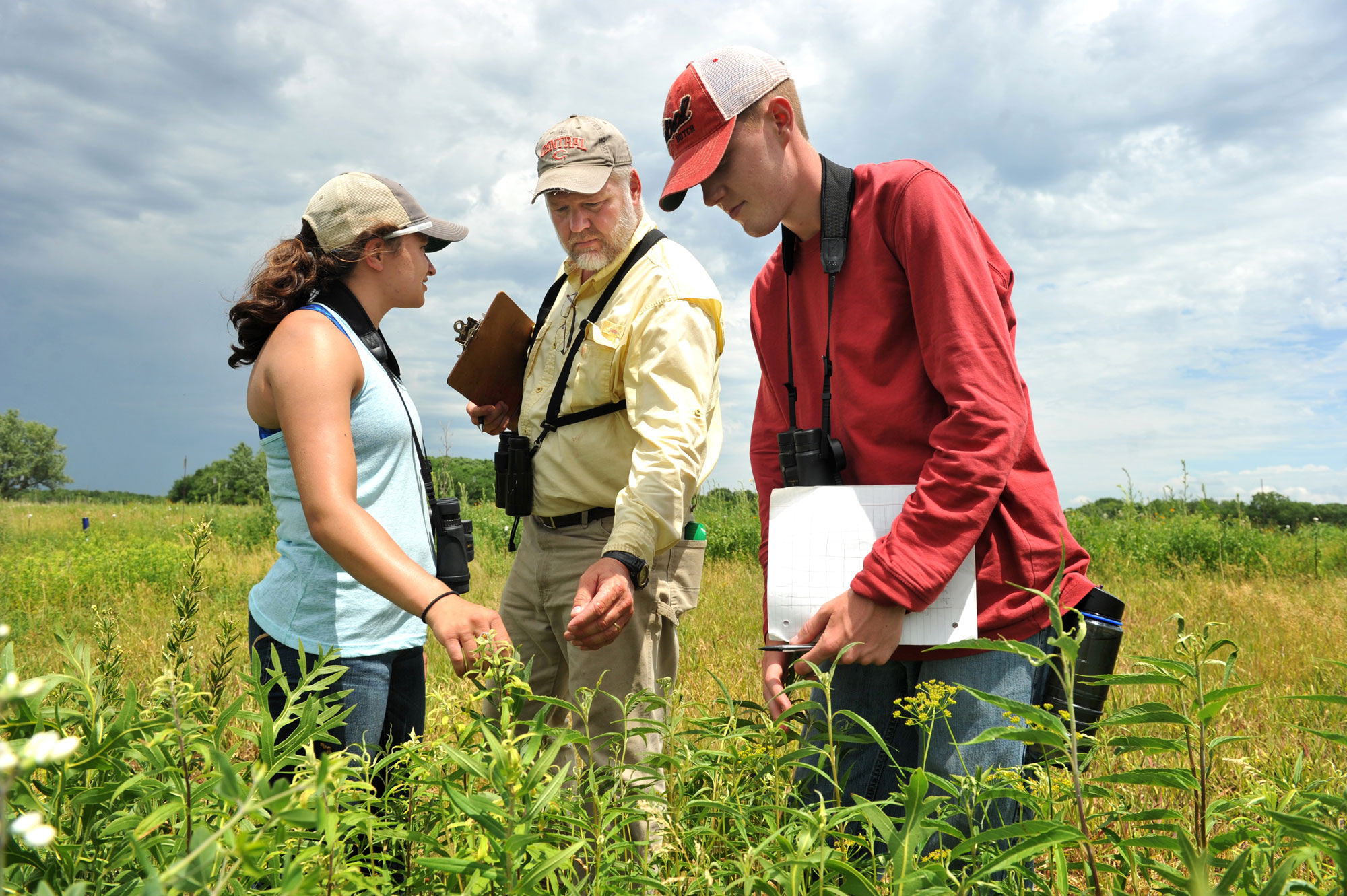In grassy fields under a vivid sky, students scrutinize flowering plants for bees, flies and butterflies. Biology majors at Central College, they won grants to conduct Prairies for Agriculture research with professor Russ Benedict. Throughout the summer, they’ll collect rich data to help answer the question: Can prairies be restored to benefit Midwestern farms and our environment?
Benedict, professor of biology, has been leading the project for six years. Designed for research over several decades, the study creates research opportunities for students while examining significant questions, such as: Do farmers receive greater benefit from planting prairie species on un-farmable land instead of non-native grasses? What further benefits come from native prairie plants?

Benedict and students track one of the benefits of prairie plants — increased support for pollinators like flies and honeybees. “Pollinators are in steep decline,” Benedict says, “and they’re not only vital in nature but also a multi-billion dollar business.”
What these researchers know about prairies might surprise you. How well do you know Iowa’s native landscape?
True or false? Prairie is one of the world’s most endangered ecosystems.
It’s true. Although tallgrass prairie used to blanket thousands of square miles — from Indiana to Nebraska and Canada to Texas — less than four percent of this ecosystem remains. In Midwestern states like Iowa, less than .1 percent of tallgrass prairie remains. The prairie ecosystem built incredible soils that helped create the “Breadbasket of the World,” yet most Midwesterners have never even seen a remnant of their now-rare, native landscape.

Several of the research plots are planted only with grasses that occupy most un-farmable land along hillsides and streams. “There’s nothing blooming, not a single bee or butterfly,” Benedict observes. “You’re never going to see one here, but it’s important to keep a record of that zero.”
True or false? To plant a variety of prairie species, Midwestern farmers must plant less corn and soybeans.
False. These diverse plantings are designed for un-farmable locations on a typical farm, where farmers usually plant some type of grass. It’s more advantageous to plant a mixture of species — together, prairie plants slow soil erosion, attract pollinators and absorb excess fertilizers. Not to mention, farmers can harvest these grasses to feed livestock and create biofuel.

Sophomore Jack Sytsma of Leighton, Iowa, talks with professor Russ Benedict while the group conducts research. On this day, students record several types of butterflies, moths, flies and bees in prairie plots with up to 64 different plant species.
True or false? Prairie plants have significant potential for creating fuel.
True. Prairies create huge amounts of biomass. Compared to corn-based ethanol, fuel made from prairie uses less oil in its production, and the crop requires no fertilizers or pesticides. Plus, prairie grasses store tons of carbon in the ground, so the fuel could actually be carbon negative, storing more carbon than it creates. Research in Minnesota has shown that diverse prairie vegetation produces more biomass per acre than other crops, and these can be grown in poor soils with little to no irrigation. Since prairie provides so many other benefits to agriculture and the environment as well, its uses far outweigh the cost of planting.

Jack Sytsma and senior Evie Kammeyer of Urbandale cross Central’s Carlson-Kuyper Field Station to study another plot. The field station, a 62-acre nature preserve and “outdoor laboratory,” is home to this project, with more than 350 plots and 125 different combinations of prairie plants.
Read about more summer research to discover Central students’ work in jury psychology, neuroscience, spintronics and more.


